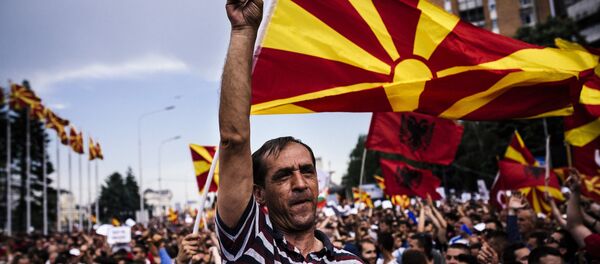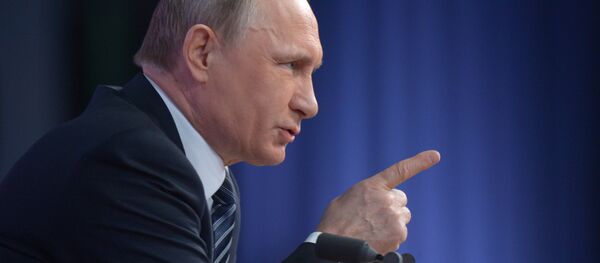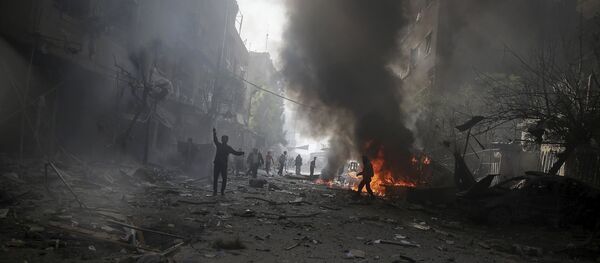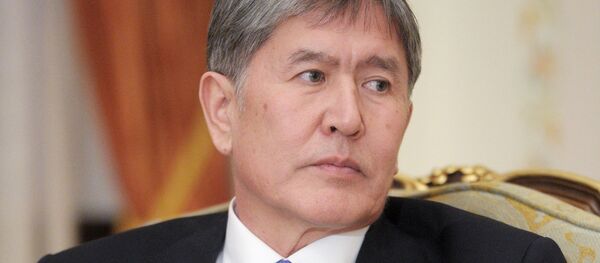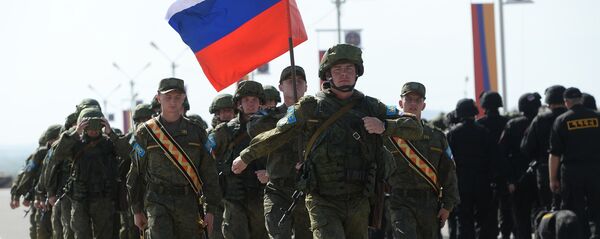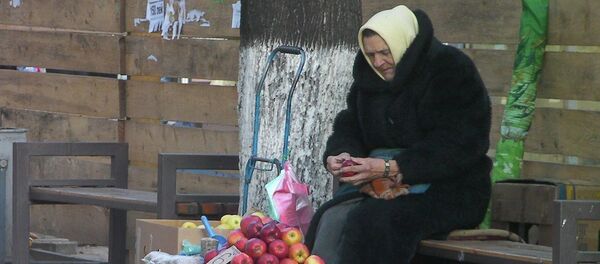On Tuesday, the State Department and USAID held a special joint briefing, laying out a $50.1 billion spending request for 2017, including $953 million in "critical support for Ukraine and surrounding countries in Europe, Eurasia and Central Asia to counter Russian aggression through foreign assistance and public diplomacy."
The spending would be separate from the proposed $3.4 billion (up from $789 million in 2016), provided by the so-called "European Reassurance Initiative," which aims for "a significant reinvestment in the US military presence in Europe after decades of gradual withdrawal" to counter "the growing threat Russia poses to long-term US national security interests in Europe and beyond."
With most of the Western media basically ignoring the plans and focusing on other aspects of the budget's whopping $4 trillion in proposed spending, Russian security analysts, naturally, couldn't let this 'minor detail' simply slip by unnoticed, given that the spending proposal is openly oriented against Russia.
Analyzing the State Department's proposed new spending spree, Svobodnaya Pressa columnist Andrei Ivanov says that the outlays raise as many questions as they answer.
"Secondly, it's unclear what kind of 'countering of Russian aggression' the State Department means in relation to Central Asia. Kazakhstan and Kyrgyzstan have long been oriented toward Moscow, and even joined with Russia in the common customs area of the Eurasian Economic Union. Kazakhstan, Kyrgyzstan, and Tajikistan are also part of the Collective Security Treaty Organization's unified security system. Russia has also signed a series of bilateral cooperation agreements with Uzbekistan."
The proposed spending, Ivanov notes, "assumes a serious US commitment to pursuing its [geopolitical] goals, which threatens Russia with obvious negative consequences. The question thus arises about the countermeasures our country might take in response."
"According to experts, on the eve of the coup d'état in Ukraine in 2014, over two thousand non-governmental organizations were created, from training camps for militants to various clubs of political scientists and media workers."
Asked to comment on the State Department's new spending proposal, Andrei Manoilo, a professor of political science at Moscow State University, expressed a commonly held view among Russian security professionals.
Namely, the professor told the newspaper, "when Washington talks about spreading democracy, and allocates money for this purpose, it is referring to 'color revolutions' – the overthrow of undesirable regimes and the drive to bring puppets who mimic democracy to power."
"Factually, these countries find themselves under American control. Ukraine is a vivid example. Until recently, Georgia too served as a good example, with each department and ministry in the country featuring an advisor and curator from the State Department. In Ukraine, supervision is carried out through the US Embassy, and through officials loyal to Washington, charged with implementing its instructions."
In Georgia's case, "after Mikheil Saakashvili resigned from his post and was forced to flee the country, the American position weakened somewhat, mainly due to the perceived negativity which the color revolution had brought the country. So here, the US [spends] in order to maintain its influence. It is also possible that the US is considering ensuring the loyalty of Georgian elites by 'nourishing' cyclical color revolutions, thus carrying out a rotation of the elite."
As for Central Asia, the State Department announcement seems to indicate, according to Manoilo, "that color revolutions are planned there as well. The Americans need to see regime change in the countries which, for the most part, are oriented toward Russia. In Central Asia, Moscow has several projects geared toward integration, including the Shanghai Cooperation Organization and the CSTO. Today, the countries in the region face a difficult situation, with disintegratory processes growing among them."
In Kyrgyzstan, meanwhile, "the situation has changed little since the last color revolution. The protest mood remains strong. US NGOs and foundations have been working actively with the rural population, which is not very versed in politics, but is easy to agitate to participate in demonstrations against authorities, as the 'melon' revolution of 2010 demonstrated."
In all the countries of Central Asia, Manoilo noted, "there is the strong factor of Islamist radicalism. By and large, only the presence of Russian military bases holds back an Islamist offensive in the region."
Unfortunately, he says, "practice has shown that when it comes to overthrowing undesirable governments, the State Department easily finds a common language with even the most rabid fundamentalists. It's sufficient to recall the color revolutions of the so-called Arab Spring. It would not be out of place to presume that the US is preparing their repetition, except this time in the post-Soviet space."
"In addition to Central Asia, there is the southern Caucasus. Last summer, Armenia saw a rehearsal of a color revolution under non-political slogans – a new technology called the 'Electro-Maidan'. Armenia is a Russian ally in the South Caucasus, and the US has plans for regime change, using their methods of the so-called 'democratic transition'."
Ultimately, Manoilo warns, "by dismantling the political order in Russia's neighboring countries, the US wants to create a vacuum around our country. Simply put, this indicates a repeat of the Ukrainian scenario. After all, until very recently it was simply impossible to imagine Ukraine as a country which is hostile to Russia."
Russia's Response
"After all," Manoilo noted, "preparations for coups begin covertly, over a period of several years, before protesters come out to the square. Protest movements are prepared according to a well-established pattern, and if the 'revolutionary' activity is uncovered at the preparation stage, the State Department tends to curtail its activities, due to the risk of something going wrong, or costs exceeding the allocated budget."
"Today, Russia and the countries of Central Asia coordinate their efforts within the CSTO framework to identify threats of a military nature – from Islamists and others. The same kind of coordinated work is necessary for identifying planning for the organization of color revolution. That is, there needs to be a single coordination center, and unified monitoring, intelligence and warning systems in place."
"Without question," the professor notes, "it is also necessary to expand work with civil society, especially with the youth. For this, one can rely on the governments of the countries which are at risk. But there must be a common policy –one which would help reduce the base of recruitment for the organizers of color revolutions."
"For young people," Manoilo emphasizes, "it is necessary to build social mobility, so that youth can look for opportunities and engage in constructive activity."
"The 'revolutionaries' offer young people an instant career. It is well-known that young people are anything but patient. They want to achieve social status here and now. In day-to-day life, it demands long, hard work…But the 'revolutionaries' offer something different. They say to a young man: 'Come to the square, yell against the authorities for a while, and in a week we'll give you the title of a 'hundreds' revolutionary. And a member of the 'hundreds' is someone of status, a big cheese, the girls see him as a hero. And it is through such 'little lies' that the organizers of coups attract young people. They understand the psychology of young people, and the needs they seek to satisfy, very well."
"Therefore," the political scientist notes, "it's necessary to carry out broad social work. Young people need to see their prospects for the future. And then they would not come out to any 'Maidan', no matter what someone did to urge them on."
Ultimately, Manoilo says, "this system has to be built from scratch." Unfortunately, "Russia does not have experience of work with civil society abroad."
However, "we have accumulated some experience at home. Most importantly, Russia itself has experts capable of working to counteract color revolutions. We know what to do and how. The time when everyone feared color revolutions and did not know how to react to them has passed. And so in response to the American export of 'color revolution technology', Russia can export its own technology – political stabilization."


